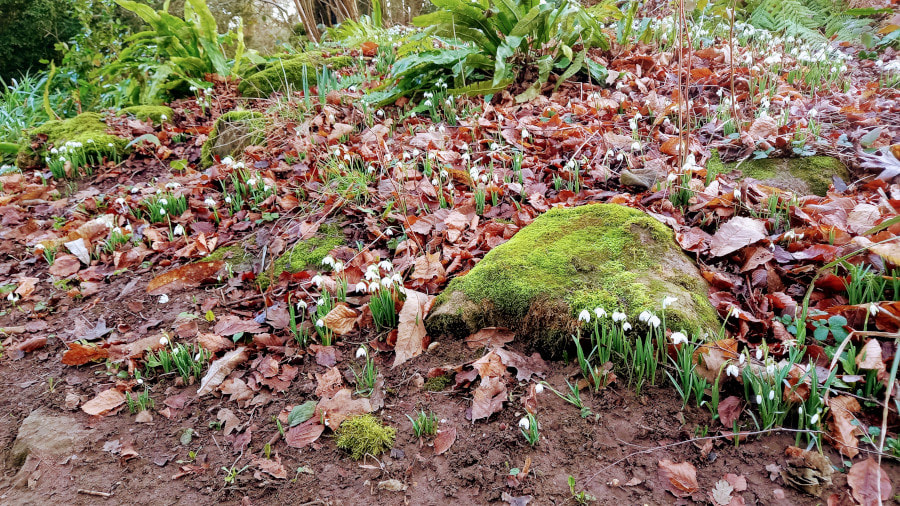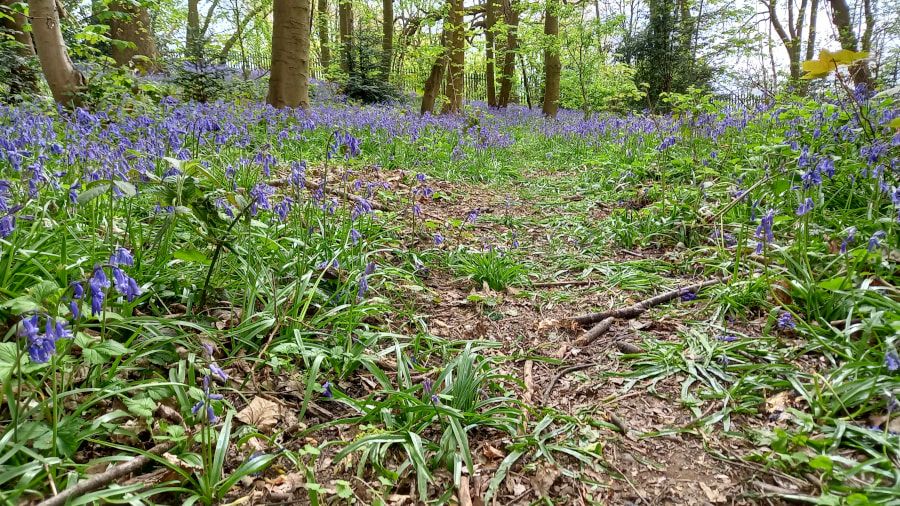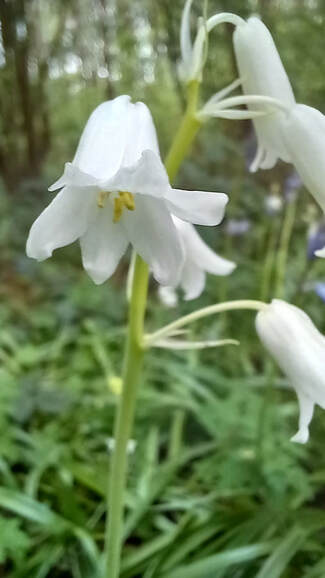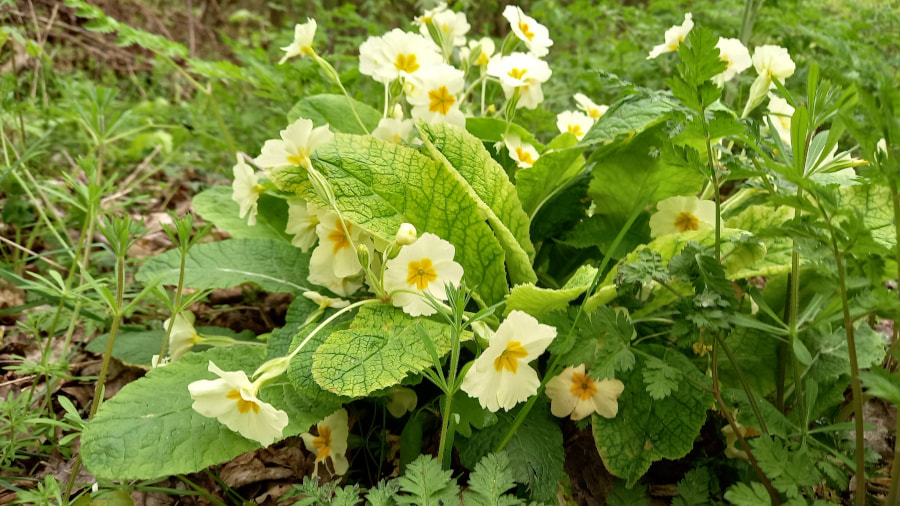Spring Plants and Flowers
Snowdrop (Galanthus nivalis)
Spotting this delicate white flower can only gladden the heart, it is a symbol of hope for better times ahead. However, to see a single snowdrop flower was once viewed as a sign of impending death, and it was considered bad luck to take one into a house. The flower has a long association with the Christian festival of Candlemas and was often used to decorate churches during the celebration. This earned it the alternative name of Candlemas Bells. The best display of Snowdrops can be found growing in profusion around the Bestwood Lodge Japanese Water Garden.
Garlic Mustard (Alliaria petiolata)
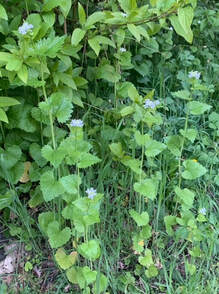
Garlic Mustard is also known as, Jack-by-the-Hedge, can be found growing in the park during spring and summer and favours the shady edges of woodland and hedge rows. The heart-shaped leaves of Garlic mustard are smooth and hairless, and rather like those of nettles; when crushed, they smell of garlic. Its small, white flowers have four petals in the shape of a cross and grow in clusters at the ends of the stems. It is the configuration of the flowers that tells us the plant is a member of the mustard family and nothing to do with garlic, even though it both smells and tastes like it. Mustard, in turn, is a member of the Brassicaceae plant family. Cabbage, broccoli and turnips are also members of the same family.
Because the plant is categorised as being edible it is much sort after by the foraging community, the leaves and its roots can be used in salads and cooking recipes.
Do not attempt to eat any plant in the park unless you are absolutely certain of its identity.
Because the plant is categorised as being edible it is much sort after by the foraging community, the leaves and its roots can be used in salads and cooking recipes.
Do not attempt to eat any plant in the park unless you are absolutely certain of its identity.
Bluebells (Hyacinthoides non-scripta)
The appearance of Bluebells is a sure sign that Spring has well and truly sprung. They usually bloom in late April or early May and in places carpet the woodland floor, filling it with a delicate scent and providing much needed nectar for bees, butterflies and other insects. They are often associated with ancient woodland, and it can take up to five years for a bluebell bulb to develop from a seed. Although we normally see the familiar deep violet-blue flowers, there are also rare genetic mutations that give us white Bluebells.
The very best display of the plants can be seen from the path running parallel to the, Big Wood School field just before the, Ludgate Close kissing gate entrance.
The very best display of the plants can be seen from the path running parallel to the, Big Wood School field just before the, Ludgate Close kissing gate entrance.
Primrose (Primula vulgaris)
Another harbinger of the long, sunny days to come is the Primrose. They are found in woods, at the base of hedgerows and in grasslands. They can bloom as early as late December and flower until May. Not only that, they are one of the first woodland blooms and an important nectar source for butterflies. A particularly good spot to see them is the Bestwood Lodge Japanese Water Garden, although for some reason the spring of 2022 has seen a dearth of them
Broom ( Cytisus scoparius)
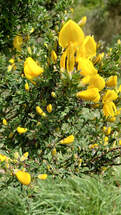
Broom is a large, deciduous shrub, similar in appearance to gorse, but without the spines. This member of the pea family is common on heaths, in open woodlands and along hedgerows. Its bright yellow flowers appear in spring, from April to June, and smell of vanilla. It is quite likely that Broom got its name from the fact that its long, whip-like stems were cut and tied together to make brushes. The town of, Bromley in, Kent is named after the shrub. Broom can typically be seen growing around Pit Top Tip and the surrounding areas.

